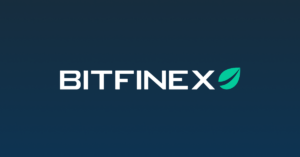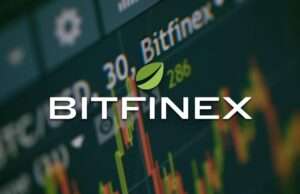Latest News
- Price predictions 4/18: BTC, ETH, XRP, BNB, SOL, DOGE, ADA, LEO, LINK, AVAX
- Price predictions 4/16: BTC, ETH, XRP, BNB, SOL, DOGE, ADA, LEO, LINK, AVAX
- Price analysis 4/14: SPX, DXY, BTC, ETH, XRP, BNB, SOL, DOGE, ADA, LEO
- Is It Time For Altcoin Season? Bitcoin Dominance Rises To Major Rejection Zone
Current Price
The current price of LEO is $9.32769
Introduction
Welcome to our LEO token review.
UNUS SED LEO (LEO) serves as the native utility token of the Bitfinex exchange, offering a range of benefits designed to enhance user experience and engagement.
Its innovative tokenomics, including a buyback and burn mechanism, aim to create scarcity and potentially increase value.
As LEO navigates the complexities of market sentiment and regulatory changes, its performance raises intriguing questions about its resilience and future potential.
The upcoming sections of this review will explore the key features, market performance, and comparative standing of LEO, providing a thorough view of its role within the cryptocurrency landscape.
Quick Overview
- UNUS SED LEO is the native utility token of Bitfinex, launched in 2019 for trading fee discounts and premium access.
- The token operates on the Ethereum blockchain using the ERC-20 standard, ensuring interoperability with various platforms.
- LEO incorporates a buyback and burn mechanism that reduces circulating supply, aiming to enhance its value over time.
- Its value is influenced by cryptocurrency market trends, regulatory developments, and market sentiment, exhibiting notable volatility.
- LEO offers governance rights to holders, allowing participation in decision-making processes within the Bitfinex ecosystem.
Overview of UNUS SED LEO
Here is a great overview video explaining about $LEO token:
UNUS SED LEO, the native utility token of the Bitfinex exchange, serves as a pivotal component in the ecosystem of digital assets. Launched in 2019, LEO was initially created to raise funds for the exchange’s operational needs, particularly in the wake of regulatory challenges. The token is built on the Ethereum blockchain, adhering to the ERC-20 standard, which facilitates interoperability with a variety of decentralized applications and wallets.
The primary use of LEO within the Bitfinex platform includes reducing trading fees, accessing premium services, and participating in token buybacks. The tokenomics of LEO are designed to support its value through strategic buybacks and token burns, which aim to decrease the circulating supply over time. This deflationary model is intended to enhance the long-term value proposition for holders.
Moreover, LEO’s integration with the Bitfinex ecosystem extends to various financial products and services, including margin trading and lending. As a result, LEO not only acts as a utility token but also plays a role in enhancing liquidity and user engagement on the platform.
Key Features and Benefits
The key features and benefits of LEO token are integral to its function within the Bitfinex exchange ecosystem. Primarily, LEO serves as a utility token, offering holders a range of privileges including reduced trading fees, which can greatly enhance cost efficiency for frequent traders. This fee reduction incentivizes the use of LEO, thereby increasing its demand within the platform.
Another notable feature is the token’s integration with the Bitfinex ecosystem, allowing seamless transactions and interactions across various services, such as margin trading and lending. The token also supports enhanced liquidity on the exchange, as it can be used for collateral in trading operations, further solidifying its role in facilitating trading activities.
Moreover, LEO is subject to a buyback and burn mechanism, which aims to reduce the total supply over time, potentially increasing its value through scarcity. This deflationary model appeals to investors seeking long-term value appreciation.
In addition, LEO tokens are designed to provide holders with governance rights, allowing them to participate in decision-making processes regarding the platform’s future developments.
Collectively, these features position LEO as a pivotal asset within the Bitfinex ecosystem, driving user engagement and investment.

Market Performance Analysis
Market performance analysis of the LEO token reveals a complex interplay of factors influencing its valuation and trading activity within the cryptocurrency market. Primarily, LEO’s value is impacted by the overall sentiment toward the cryptocurrency ecosystem, where regulatory developments and macroeconomic conditions play significant roles.
The token has exhibited remarkable volatility, often responding sharply to market trends and news events. Trading volume analysis indicates a robust liquidity profile, suggesting active participation from both retail and institutional investors. Significantly, the token’s price movements often correlate with broader market trends, reflecting investor sentiment and confidence in the Bitfinex exchange, which is its primary utility platform.
Furthermore, LEO’s unique tokenomics, including its deflationary model and buyback mechanisms, contribute to its pricing dynamics. The market capitalization has shown fluctuations, mirroring investor perceptions of its utility and adoption.
In addition, technical indicators such as moving averages and RSI (Relative Strength Index) provide insights into potential entry and exit points for traders, while market depth analysis reveals the order flow and potential resistance levels.
Collectively, these factors create a thorough picture of LEO’s market performance, highlighting its complexities within the cryptocurrency landscape.
Comparison With Other Tokens
How does LEO compare to other tokens in the cryptocurrency ecosystem? UNUS SED LEO (LEO) operates with a unique utility model that distinguishes it from many other tokens. Primarily used to facilitate trading fee discounts on the Bitfinex exchange, LEO provides a direct economic incentive for users, contrasting with tokens that serve broader purposes such as governance or staking rewards.
In terms of market performance, LEO has demonstrated resilience, often maintaining value even during periods of increased volatility across the crypto market. This stability can be attributed to its backing by the revenue generated from Bitfinex, creating a more robust financial foundation than that of many purely speculative tokens.
Moreover, while tokens like Ethereum (ETH) or Binance Coin (BNB) have diverse ecosystems bolstered by extensive use cases, LEO’s utility is more concentrated. This specificity may appeal to traders seeking cost efficiencies but limits its adoption in diverse applications, which could hinder long-term growth compared to multi-functional tokens.
Consequently, while LEO holds a strategic position within its niche, its comparative analysis reveals both strengths and limitations relative to a broader array of cryptocurrency tokens.

Future Outlook and Predictions
Looking ahead, the future outlook for UNUS SED LEO (LEO) hinges on several critical factors, including its integration within the Bitfinex ecosystem and broader market trends in cryptocurrency adoption.
The token’s utility is strongly tied to the operational efficiency of Bitfinex, where it serves as a mechanism for fee discounts and liquidity enhancement. As the cryptocurrency market matures, increased adoption among institutional investors could bolster demand for LEO, potentially driving price appreciation.
Additionally, regulatory developments will play an important role in shaping the landscape for LEO. The compliance of Bitfinex with evolving regulations could enhance user confidence, thereby attracting new participants to the platform.
Key considerations for LEO’s future include:
- Market Sentiment: Overall investor sentiment towards cryptocurrencies can greatly influence LEO’s performance.
- Technological Advancements: Innovations within the Bitfinex platform may enhance LEO’s utility and attractiveness.
- Competitive Landscape: The emergence of new tokens and platforms will challenge LEO’s position, necessitating continual improvement and adaptation.
Frequently Asked Questions
How Can I Acquire UNUS SED LEO Tokens?
To acquire UNUS SED LEO tokens, engage with cryptocurrency exchanges that list the token. Confirm you have a compatible wallet, complete necessary identity verification, and execute a purchase using your preferred cryptocurrency or fiat currency.
What Are the Transaction Fees for LEO Trading?
Transaction fees for trading cryptocurrencies typically vary based on the exchange platform, trade volume, and market conditions. It is essential to review the specific fee structure of the platform utilized for accurate cost assessment.
Is LEO Available on All Cryptocurrency Exchanges?
LEO is not universally available across all cryptocurrency exchanges. Its accessibility varies, with major platforms typically listing it, while smaller or decentralized exchanges may lack support, necessitating thorough research for traders seeking to acquire LEO.
Can LEO Be Stored in Any Wallet?
LEO tokens can be stored in wallets that support ERC-20 tokens, as they are based on the Ethereum blockchain. It is crucial to verify wallet compatibility to guarantee secure storage and access to LEO assets.
What Is the Maximum Supply of UNUS SED LEO Tokens?
The maximum supply of Unus Sed Leo tokens is capped at 1 billion. This limit was established to create scarcity and potentially enhance the token’s value, aligning with market dynamics and user demand in the cryptocurrency ecosystem.

Wrapping Up
To conclude, UNUS SED LEO (LEO) serves as a notable utility token within the Bitfinex ecosystem, providing various advantages such as reduced trading fees and governance rights.
Its innovative tokenomics, characterized by a buyback and burn mechanism, enhances scarcity and value retention.
Market performance remains influenced by external factors, including regulatory developments and overall cryptocurrency trends.
Future prospects appear promising, contingent upon continued user engagement and evolving market dynamics, solidifying LEO’s position in the competitive crypto landscape.

